
- Bandgap-universal passivation enables stable perovskite solar cells with low photovoltage loss
- Lin et al. Science, 384:767-775 (May 2024)
[
pdf ][ DOI:10.1126/science.ado2302 ]
We demonstrate a vapor-based amino-silane passivation that reduces photovoltage deficits to around 100 millivolts (>90percent of the thermodynamic limit) in perovskite solar cells of bandgaps between 1.6 and 1.8 electron volts, which is crucial for tandem applications. |

- Ultrafast photo-induced phonon hardening due to pauli blocking in {MAPbI}$_3$ single-crystal and polycrystalline perovskites
- Xia et al. J. Phys-Mater., 4:044017 (Oct 2021)
[
pdf ][ DOI:10.1088/2515-7639/ac22b9 ]
We observed the shift of phonon modes in thin file and single crystals MAPbI3 that occurs when the materials are optically excited. We observe an ultrafast Pauli blocking effect with leads to phonon hardening / blue-shifting. |
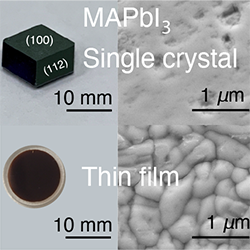
- Limits to electrical mobility in lead-halide perovskite semiconductors
- Xia et al. J. Phys. Chem. Lett., 12:3607-3617 (Apr 2021)
[
pdf ][ DOI:10.1021/acs.jpclett.1c00619 ]
We measure THz photoconductivity of single crystals and thin films of the prototypical metal halide perovskite MAPbI3. This direct comparison combined with DFT calculations allows us to study the influence of grain boundaries on charge-carrier scattering, and hence mobility. |
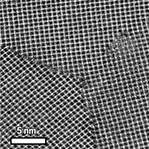
- Atomic-scale microstructure of metal halide perovskite
- Rothmann et al. Science, 370:eabb5940 (Oct 2020)
[
pdf ][ DOI:10.1126/science.abb5940 ]
We grew the films for this remarkable atomic resolution study of grain boundaries in the metal halide perovskite FAPbI3. |
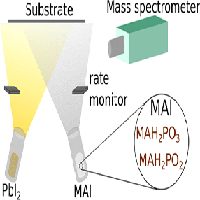
- Impurity Tracking Enables Enhanced Control and Reproducibility of Hybrid Perovskite Vapor Deposition
- Borchert et al. ACS Appl. Mater. Interfaces, 11:28851-28857 (Jul 2019)
[
pdf ][ DOI:10.1021/acsami.9b07619 ]
Our results indicate that as long as precursor deposition rates are well controlled, physical vapor deposition will allow high solar cell device yields even if the purity of precursors changes from one run to another. |
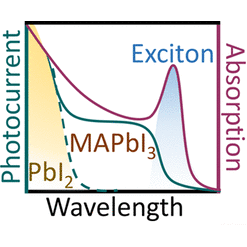
- Photocurrent spectroscopy of perovskite solar cells over a wide temperature range from 15 to 350 k
- Patel et al. J. Phys. Chem. Lett., 9:263-268 (Jan 2018)
[
pdf ][ DOI:10.1021/acs.jpclett.7b02935 ]
We assess the device characteristics of the prototypical perovskite solar cells based on methylammonium lead triiodide over a broad temperature range from 15 to 350 K. |
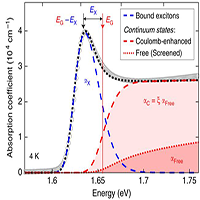
- Bimolecular recombination in methylammonium lead triiodide perovskite is an inverse absorption process
- Davies et al. Nat. Commun., 9:293 (Jan 2018)
[
pdf ][ DOI:10.1038/s41467-017-02670-2 ]
We show that bimolecular charge-carrier recombination in methylammonium lead triiodide perovskite can be fully explained as the inverse process of absorption. |
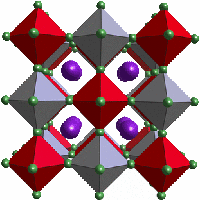
- {Cs}$_2${InAgCl}$_6$: a new lead-free halide double perovskite with direct band gap
- Volonakis et al. J. Phys. Chem. Lett., 8:772- (Feb 2017)
[
pdf ][ DOI:10.1021/acs.jpclett.6b02682 ]
|
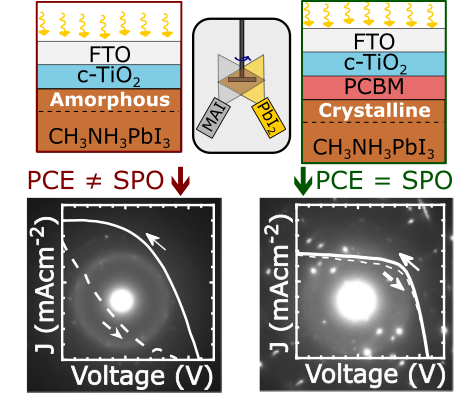
- Influence of Interface Morphology on Hysteresis in Vapor-Deposited Perovskite Solar Cells
- Patel et al. Adv. Electron. Mater., 3:1600470 (Feb 2017)
[
pdf ][ DOI:10.1002/aelm.201600470 ]
We use interface engineering to produce highly crystalline perovskite hysteresis-free evaporated planar heterojunction solar cells. TEM reveals that poor interfaces leads to amorphous regions of MAPbI3, hysteresis and poor stabilised power conversion efficiencies. |
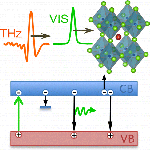
- Hybrid Perovskites for Photovoltaics: Charge-Carrier Recombination, Diffusion, and Radiative Efficiencies
- Johnston et al. Accounts Chem. Res., 49:146--154 (Jan 2016)
[
pdf ][ DOI:10.1021/acs.accounts.5b00411 ]
A review of the photo physics of Perovskite based semiconductors |
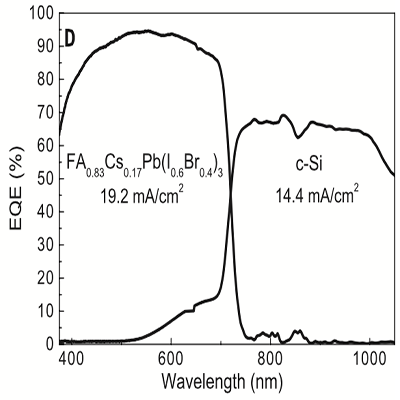
- A mixed-cation lead mixed-halide perovskite absorber for tandem solar cells
- McMeekin et al. Science, 351:151-155 (Jan 2016)
[
pdf ][ DOI:10.1126/science.aad5845 ]
|
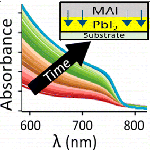
- Formation Dynamics of CH$_3$NH$_3$PbI$_3$ Perovskite Following Two-Step Layer Deposition
- Patel et al. J. Phys. Chem. Lett., 7:96-102 (Jan 2016)
[
pdf ][ DOI:10.1021/acs.jpclett.5b02495 ]
We follow the formation of MAPbI3 from PbI2 and MAI precursors using XRD, VIS, and PL spectroscopies and show the importance of water in achieving full crystallisation |
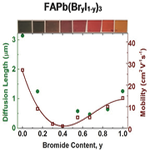
- Charge-Carrier Dynamics and Mobilities in Formamidinium Lead Mixed-Halide Perovskites
- Rehman et al. Adv. Mater., 27:7938--7944 (Dec 2015)
[
pdf ][ DOI:10.1002/adma.201502969 ]
|
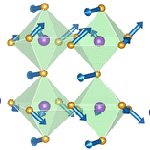
- Vibrational Properties of the Organic−Inorganic Halide Perovskite $CH_3NH_3PbI_3$ from Theory and Experiment: Factor Group Analysis, First-Principles Calculations, and Low-Temperature Infrared Spectra
- Perez-Osorio et al. J. Phys. Chem. C, 119:25703--25718 (Oct 2015)
[
pdf ][ DOI:10.1021/acs.jpcc.5b07432 ]
|
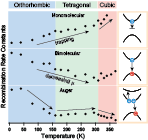
- Temperature-dependent charge-carrier dynamics in {CH$_3$NH$_3$PbI$_3$} perovskite thin films
- Milot et al. Adv. Funct. Mater., 25:6218-6227 (Oct 2015)
[
pdf ][ DOI:10.1002/adfm.201502340 ]
The photoconductivity in CH3NH3PbI3 thin films is investigated from 8 K to 370 K across three structural phases, and analysis of the charge-carrier recombination dynamics reveals a variety of starkly differing recombination mechanisms. |
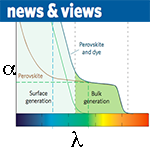
- Colour-selective photodiodes
- Johnston Nat. Photonics, 9:633-636 (Oct 2015)
[
pdf ][ DOI:10.1038/nphoton.2015.180 ]
|
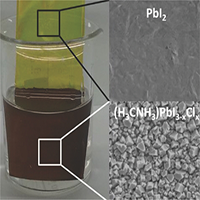
- Solution deposition-conversion for planar heterojunction mixed halide perovskite solar cells
- Docampo et al. Adv. Energy Mater., 4:1400355 (Oct 2014)
[
pdf ][ DOI:10.1002/aenm.201400355 ]
We present planar, fully solution-processed heterojunction mixed halide solar cells based on the solution deposition-conversion technique. |
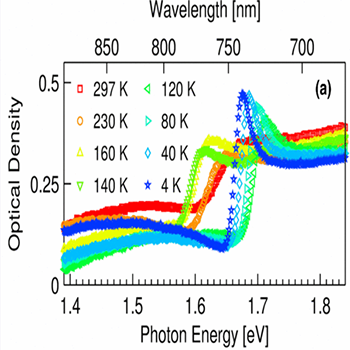
- Charge carrier recombination channels in the low-temperature phase of organic-inorganic lead halide perovskite thin films
- Wehrenfennig et al. APL Mater., 2:081513 (Aug 2014)
[
pdf ][ DOI:10.1063/1.4891595 ]
we present a temperature-dependent study of optical absorption and photoluminescence (PL) emission of vapor-deposited organic-inorganic Perovskite semiconductors exploring the nature of recombination channels in the room- and the low-temperature phase of the material. |
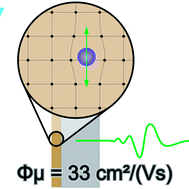
- Charge-carrier dynamics in vapour-deposited films of the organolead halide perovskite {CH$_3$NH$_3$PbI$_{3-x}$Cl$_x$}
- Wehrenfennig et al. Energy Environ. Sci., 7:2269--2275 (Jun 2014)
[
pdf ][ DOI:10.1039/C4EE01358A ]
We determine high charge-carrier mobilities over 33 cm^2/V/s and bi-molecular recombination rates about five orders of magnitude below the prediction of Langevin's model in vapour-deposited Perovskite solar cells. |
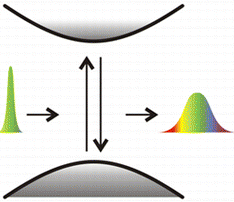
- Homogeneous Emission Line Broadening in the Organo Lead Halide Perovskite $CH_3NH_3PbI_{3-x}Cl_x$
- Wehrenfennig et al. J. Phys. Chem. Lett., 5:1300-1306 (Apr 2014)
[
pdf ][ DOI:10.1021/jz500434p ]
We show that the PL spectrum of the Perovskite methyl ammonium lead trihalide is homogenously broadened with a line width of 103 meV as a consequence of phonon coupling effects. Thus the materials has the potential to be used in a laser with pulses as short as 10fs. |
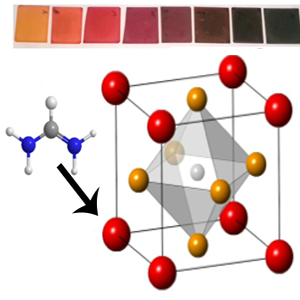
- Formamidinium lead trihalide: a broadly tunable perovskite for efficient planar heterojunction solar cells
- Eperon et al. Energy Environ. Sci., 7:982-988 (Mar 2014)
[
pdf ][ DOI:10.1039/C3EE43822H ]
|
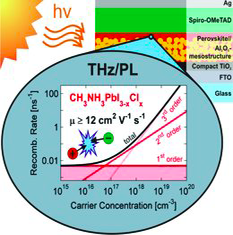
- High Charge Carrier Mobilities and Lifetimes in Organolead Trihalide Perovskites
- Wehrenfennig et al. Adv. Mater., 26:1584-1589 (Mar 2014)
[
pdf ][ DOI:10.1002/adma.201305172 ]
The reason for the high performance of Perovskite solar cells is presented. Organolead trihalide perovskites are shown to exhibit the best of both worlds: charge carrier mobilities around 10 cm2/V/s and low bi-molecular charge recombination constants. |

- Efficient planar heterojunction perovskite solar cells by vapour deposition
- Liu et al. Nature, 501:395--398 (Sep 2013)
[
pdf ][ DOI:10.1038/nature12509 ]
We demonstrate that a simple planar heterojunction solar cell incorporating a 330nm film of vapour-deposited lead halide perovskite as the absorbing layer can have solar-to-electrical power conversion efficiencies of over 15 per cent.
|


